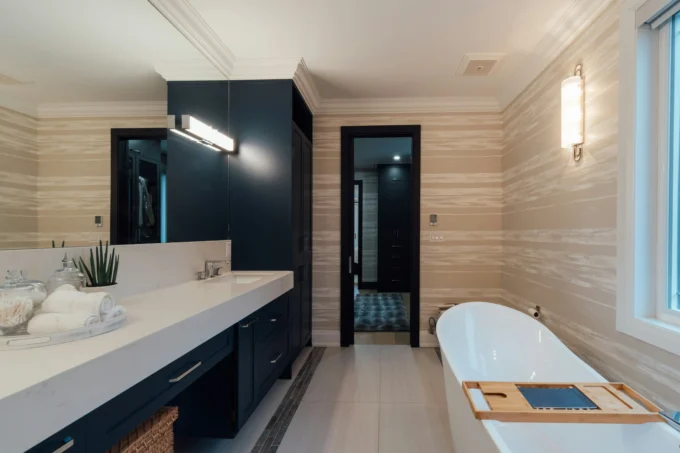- Home
- Articles
- Architectural Portfolio
- Architectral Presentation
- Inspirational Stories
- Architecture News
- Visualization
- BIM Industry
- Facade Design
- Parametric Design
- Career
- Landscape Architecture
- Construction
- Artificial Intelligence
- Sketching
- Design Softwares
- Diagrams
- Writing
- Architectural Tips
- Sustainability
- Courses
- Concept
- Technology
- History & Heritage
- Future of Architecture
- Guides & How-To
- Art & Culture
- Projects
- Interior Design
- Competitions
- Jobs
- Store
- Tools
- More
- Home
- Articles
- Architectural Portfolio
- Architectral Presentation
- Inspirational Stories
- Architecture News
- Visualization
- BIM Industry
- Facade Design
- Parametric Design
- Career
- Landscape Architecture
- Construction
- Artificial Intelligence
- Sketching
- Design Softwares
- Diagrams
- Writing
- Architectural Tips
- Sustainability
- Courses
- Concept
- Technology
- History & Heritage
- Future of Architecture
- Guides & How-To
- Art & Culture
- Projects
- Interior Design
- Competitions
- Jobs
- Store
- Tools
- More
Role of Architecture in Introducing Nature into Children’s Lives for Holistic Development
Discover how architecture bridges the gap between children and nature, fostering cognitive, emotional, and physical growth. Explore biophilic design principles, nature-inspired schools, green spaces, and innovative solutions for urban challenges that create enriching environments, promoting creativity, resilience, and lifelong connections with the natural world.

As cities grow and screens dominate our lives, it’s easy for children to lose touch with the natural world. Yet, connecting with nature isn’t just a luxury—it’s essential for their physical, emotional, and cognitive development. This is where architecture plays a powerful role, shaping spaces that bring the outdoors into daily life.
By weaving natural elements into the design of schools, homes, and parks, we can create environments that inspire curiosity and nurture a love for the planet. Thoughtful architecture doesn’t just build structures; it builds experiences, bridging the gap between children and the world outside. Let’s explore how design can spark a lifelong bond with nature.
Table of Contents
ToggleUnderstanding The Connection Between Architecture And Nature
Architectural design plays a pivotal role in bridging the gap between nature and children’s lives. Through intentional integration, built environments can support a child’s growth by fostering direct interactions with the natural world.

How Built Environments Influence Childhood Development
Architectural spaces affect how children engage with their surroundings. Designs incorporating natural features like open courtyards, green roofs, or indoor gardens encourage sensory exploration. For example, schools with outdoor learning zones allow children to experience hands-on learning, strengthening cognitive and observational skills.
Physical layouts impact children’s physical activity levels. Playgrounds constructed with natural materials like wood or stone enhance motor skill development. Ample sunlight and fresh air, promoted by large windows or open-plan designs, improve emotional well-being and reduce stress.
Importance Of Nature Exposure For Children
Exposure to nature nurtures curiosity and deeper connections with the environment. Architectural designs that integrate nature, such as biophilic interiors or community green spaces, provide daily opportunities for children to interact with plants, wildlife, and natural phenomena.
Time spent in nature-rich environments positively affects mental health and creativity. Children surrounded by nature-inspired designs—like homes with garden access or parks featuring diverse ecosystems—develop stronger problem-solving skills and adaptability. Regular exposure to natural light also improves sleep patterns, aiding overall well-being.
Principles Of Biophilic Design In Architecture
Biophilic design connects architecture and nature, creating built environments that promote interaction with the natural world. It plays a significant role in shaping children’s relationship with nature, benefiting their overall development.

Incorporating Natural Elements In Structures
Incorporating natural elements into buildings enriches children’s environments. Materials like wood, stone, or bamboo create organic surroundings that offer tactile, visual, and olfactory engagement. Green roofs, vertical gardens, and indoor plants integrate greenery into everyday spaces. Open designs using natural light, large windows, and cross-ventilation mimic outdoor conditions and enhance children’s sensory experience. Including water features, such as ponds or fountains, encourages curiosity and connection to natural cycles. When these elements are ubiquitous in our structures, children develop a closer affinity with nature.
Designing Spaces That Encourage Outdoor Activity
Outdoor-focused designs encourage children to spend more time in nature. Spaces like courtyards, rooftop gardens, and eco-parks provide safe, accessible areas for exploration and play. Pathways, climbing walls, and natural playgrounds using logs or rocks foster active engagement. Transition zones, such as covered patios or open verandas, bridge indoor and outdoor environments, promoting seamless movement between both. Using biodiversity-rich landscaping with flowering plants and trees attracts wildlife, offering opportunities for observation and interaction. These designs create dynamic spaces where children naturally develop an appreciation for the outdoors.
Examples Of Architecture Integrating Nature
Architectural designs blending natural elements play a crucial role in exposing children to the environment. These examples illustrate how purposeful integration can create enriching experiences for children.

Schools With Green Spaces
Educational institutions leveraging green spaces enhance learning environments. Schools like the Green School in Bali feature expansive gardens, bamboo classrooms, and open-air layouts to connect students with nature daily. Rooftop gardens in urban schools, such as those in New York City, allow students to grow plants, offering tactile learning about ecosystems. Outdoor learning spaces, including tree-lined courtyards, provide opportunities for outdoor education, helping children understand and value nature.
Playgrounds And Parks As Extensions Of Learning
Modern playgrounds and parks designed for interactive exploration encourage active engagement with natural elements. The Nature Play Garden in Chicago’s Garfield Park integrates native plants, climbing areas, and water features to promote imaginative play rooted in the environment. Eco-parks like Singapore’s Jacob Ballas Children’s Garden include elements like vegetable patches, treehouses, and sensory trails, allowing children to explore ecological principles through hands-on experiences. Natural playgrounds incorporating boulders, wood structures, and dirt trails create unstructured play opportunities while fostering a deeper connection with the natural world.
Benefits Of Nature-Integrated Architecture For Kids
Nature-integrated architecture offers numerous advantages for children’s growth by creating environments that seamlessly blend natural elements with built spaces. These designs positively impact their physical well-being, cognitive skills, and emotional health.

Physical Health Advantages
Exposure to natural environments through architecture boosts children’s physical activity levels. Spaces like open courtyards, climbing structures made with natural materials, and green play areas encourage movement and exercise. Increased sunlight exposure in such spaces supports Vitamin D synthesis, which strengthens bones and immune functions. Additionally, environments with vegetation improve air quality, reducing respiratory issues such as asthma.
Examples include schools with outdoor classrooms or nature trails, which promote dynamic, active learning, and parks integrated within residential complexes that support unstructured outdoor play.
Cognitive And Emotional Development
Regular interaction with nature-rich designs enhances children’s problem-solving and observational skills. Features like sensory gardens, water elements, and natural textures encourage hands-on exploration, fostering creativity and critical thinking. These environments also reduce stress and anxiety, promoting mental well-being. Studies highlight that children exposed to nature perform better in tasks requiring concentration and memory retention.
Architectural spaces like urban rooftop gardens or biophilic classrooms introduce calming natural elements like plants and daylight, helping children develop emotional resilience and a deeper sense of connection to their surroundings.
Challenges And Solutions In Implementing Nature-Centric Designs
Designing spaces that integrate nature into children’s lives presents distinct challenges, particularly in urban environments. However, thoughtful planning and innovative solutions can address many of these obstacles.

Urban Constraints And Space Limitations
Urban settings often lack available land for large nature-centric structures. High population density and crowded streets restrict the ability to develop sprawling green spaces. Architects can address these challenges by optimizing vertical spaces, such as installing rooftop gardens and green walls, which provide natural elements without requiring additional land. Compact designs like indoor green zones or multifunctional courtyards can create pockets of nature within dense urban environments. Using modular or adaptable layouts ensures maximum utility of limited areas, promoting contact with nature even in tightly packed settings.
Overcoming Budgetary And Design Barriers
Budgetary concerns and limited resources often hinder nature-focused designs. Costs for sustainable materials and complex biophilic elements, like living walls or eco-friendly systems, can strain project budgets. To overcome this, we can prioritize cost-effective, locally sourced materials, such as reclaimed wood or native plants, which reduce expenses while supporting sustainability. Simplified natural elements, such as small planters or open-air windows, offer affordability while maintaining connection to nature. Partnering with community initiatives or leveraging government incentives for green architecture further offsets financial constraints, enabling viable and impactful designs.
Conclusion
Architecture plays a vital role in embedding nature into children’s daily lives, fostering their physical, cognitive, and emotional development. By integrating elements like green roofs, courtyards, and sensory gardens, built environments offer spaces for natural exploration and learning. These designs encourage creativity, resilience, and environmental awareness, positively influencing children’s growth in urban and rural settings alike.
We must continue prioritizing biophilic principles and innovative solutions to overcome urban challenges like space constraints and limited resources. Vertical greenery, locally sourced materials, and community-driven designs ensure nature-centric architecture becomes accessible and sustainable. Through thoughtful design, we can create environments that nurture a lifelong connection between children and the natural world, shaping healthy, environmentally conscious generations.
- Architecture and child development
- architecture for children's development
- benefits of nature in education
- biophilic design for education
- child-friendly architecture design
- designing for children's wellbeing
- Eco-Friendly School Design
- environmental child development
- green architecture for kids
- holistic development through nature
- holistic growth through nature
- integrating nature in schools
- natural play spaces for kids
- nature in children's education
- nature-centered children's growth
- nature-infused learning environments
- nature-inspired educational spaces
- Outdoor learning spaces
- playgrounds with natural elements
- schools with natural environments
- sustainable architecture for children
Submit your architectural projects
Follow these steps for submission your project. Submission FormLatest Posts
Copenhagen Named the Happiest City in the World in 2025
Copenhagen has been named the happiest city in the world in 2025...
Frank Gehry’s Transformative Ideas in Urban Design
Frank Gehry’s influence extends far beyond expressive architecture; his ideas have reshaped...
Architecture as Infrastructure: Designing Beyond Buildings
Architecture as infrastructure reframes cities as systems—flows, lifecycles, and value. Explore resilient...
Designing for Emotional Urbanism: How We Shape Cities People Actually Feel Good In
Emotional Urbanism: a practical guide to design that reduces stress, boosts dwell...












Leave a comment